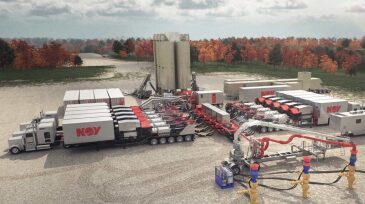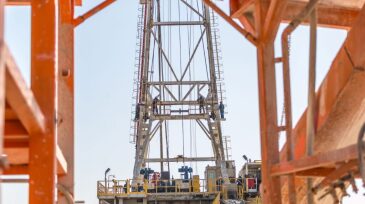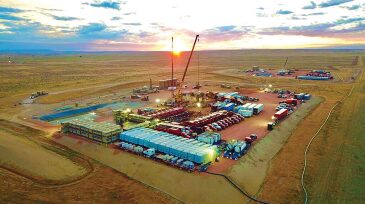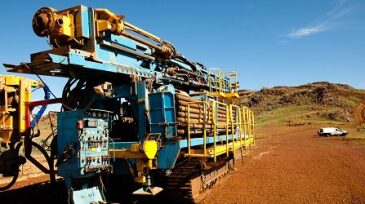Fracturing/pressure pumping
Technology developers expect the tight-oil industry to give lightweight proppants another look after the Permian Basin’s biggest operator becomes an adopter.
Operators from across the region met in Muscat to share how lessons from pilot programs are shaping cost, scale, and technology priorities across the region.
Outstanding papers over the past year have addressed topics such as casing deformation, well spacing, frac-design optimization, proppant transport in the well or in fractures, integrating diagnostics from field trials, and exploring the effects of lateral length on production.
-
The complete paper describes the first implementation of a solution to control fracture height for conventional wells in the Pannonian Basin.
-
Skipping one traditional step in the supply chain might save oil and gas companies hundreds of millions of dollars a year while making a meaningful dent in emissions.
-
A Canadian company reports that it has drilled and completed a historic horizontal well in Saskatchewan.
-
Electrically powered completions equipment takes another step toward greater sector adoption with the announcement of this new agreement.
-
The first delivery of shale gas in the UAE marks a major milestone toward its goal of reaching 1 Bcf/D by 2030. It also signals the expansion of hydraulic fracturing in the UAE’s conventional fields.
-
Groups of wells communicate, interfere, and hit each other. It is an unruly scene that can offer benefits. Three stories look at why competing fracture networks can add to the production from rock that might otherwise be missed.
-
The complete paper describes an experimental study performed to investigate the onset of liquid loading in a 6-in. production casing at various inclination angles.
-
New regulations have recently commenced with the effect that all onshore oil and gas exploration and production proposals involving hydraulic fracturing in Western Australia now will need to be referred to the Environmental Protection Authority for assessment.
-
When a plug gets stuck in a well, consider the cause. Often stuck fracturing tools are a warning sign of casing trouble. Companies that have investigated plug problems have been surprised by the findings.
-
The complete paper describes and quantifies the stress-dependence of compaction and permeability for anisotropic rock matrices, natural fractures, and hydraulic fractures, based on comprehensive rock tests of a fractured tight reservoir.













